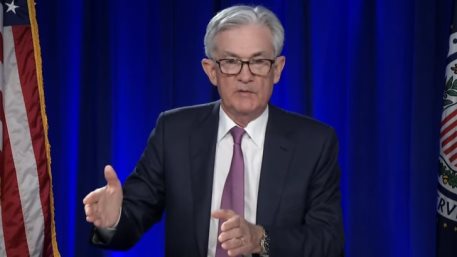
The coming week promises to be pivotal for global markets, with central bank decisions and key economic indicators taking center stage. Investors and analysts alike will be closely watching developments from the Federal Reserve, Bank of England, and the European Central Bank, alongside fresh economic data from China and Europe. Here's what to expect in the days ahead and how these events could influence financial markets.
All Eyes on the Federal Reserve: Policy Pause Expected
On Wednesday, the U.S. Federal Reserve will conclude its highly anticipated policy meeting. With inflation proving stickier than previously hoped, the Fed remains in a data-dependent mode. Most analysts expect policymakers to keep interest rates unchanged, maintaining the current target range of 5.25% to 5.50%.
Markets will be parsing every word of the post-meeting statement and, especially, Chair Jerome Powell’s press conference for any indication of future rate moves. The Fed faces the delicate task of balancing a still-resilient U.S. labor market with inflation that continues to run above its 2% target. Any hawkish signals, even subtle ones, could reignite volatility across equities and bond markets.
Central Bank Bonanza: UK Rate Cut Likely
The Federal Reserve isn’t alone this week. A number of central banks are set to hold policy meetings, reflecting diverging economic trajectories across regions.
The Bank of England is widely expected to cut interest rates on Thursday, amid mounting evidence of cooling inflation and sluggish economic growth. A UK rate cut could mark a turning point, signaling the start of a broader easing cycle in Europe, particularly if disinflation trends continue.
Meanwhile, the European Central Bank (ECB) won’t make a policy move this week, but its annual forum in Sintra, Portugal, is likely to be closely watched. The ECB is expected to begin discussing its strategy review, which could set the tone for future monetary policy and market expectations across the eurozone.
Key Data Releases: China’s Caixin PMI and European Factory Numbers
Beyond central banks, several crucial economic data points will shape the macroeconomic narrative for investors.
On Tuesday, China will release its Caixin Manufacturing PMI—a forward-looking gauge of factory activity in the world’s second-largest economy. This data is particularly relevant amid ongoing trade tensions between China and the United States. Any signs of continued weakness in China’s manufacturing sector could fuel global growth concerns and influence commodity prices and emerging market equities.
Throughout the week, Europe will publish factory and industrial output indicators, which will offer fresh insight into the health of the eurozone economy. As Germany and other core economies struggle to regain momentum, these data points will be vital in assessing whether the ECB’s expected easing path remains appropriate.
Geopolitical Undercurrents: U.S.-China Trade Tensions Simmer
While much of the market’s focus is centered on interest rates and economic indicators, geopolitical risks remain in the background. Trade tensions between the U.S. and China continue to simmer, with recent export controls and retaliatory tariffs threatening to disrupt global supply chains.
Markets will be sensitive to any developments on this front, particularly as global trade remains a key factor in shaping inflationary pressures and central bank policy choices.
Market Implications and Investor Takeaways
This week’s developments could set the tone for markets heading into the second half of 2025. With the Federal Reserve likely holding steady, attention will turn to the language used to describe inflation and growth risks. The Bank of England’s expected rate cut could offer a glimpse into how other central banks might respond to softening economic conditions.
Meanwhile, Chinese and European data will serve as a reality check for global growth expectations. Should the numbers disappoint, risk assets may face renewed pressure, while safe-haven assets like U.S. Treasuries and gold could gain favor.
For investors, the key is to stay nimble and informed. With multiple central banks in play and high-impact data releases on tap, market conditions could shift quickly.
Final Thoughts
As central banks grapple with a complex mix of inflation dynamics and uneven growth, this week’s events will offer crucial clues about the path forward for monetary policy. The outcomes will not only influence currencies and interest rates but also broader market sentiment heading into the summer months. Stay tuned—this could be a defining week for global markets.




















